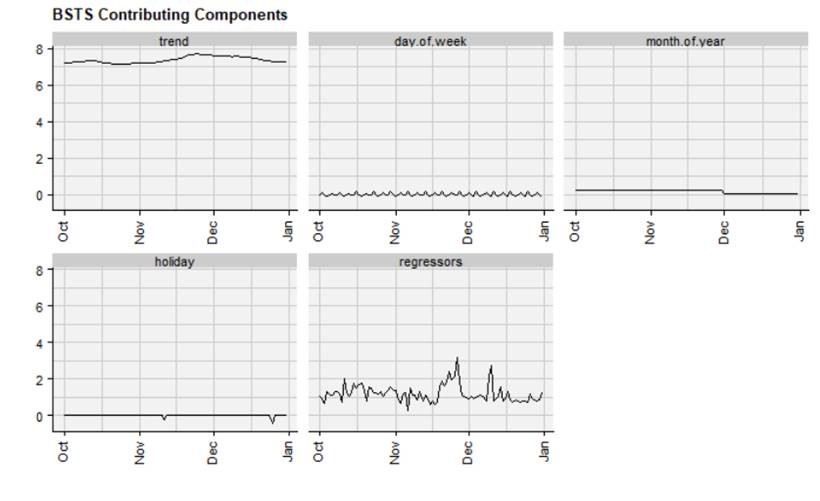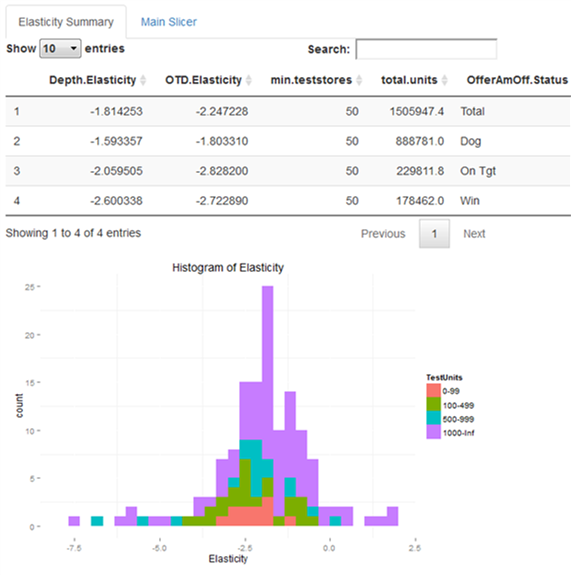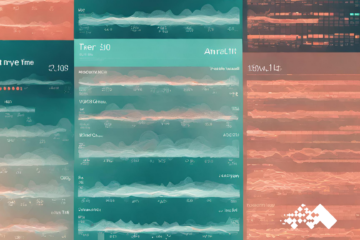AI Blog Series | Post #4 in our series examining how sporting manufactures, distributors and retailers can more intelligently price their products to boost per-unit margins
- Post #1 > The Promise of Biometrics
- Post #2 > ML Driven Segmentation
- Post #3 > Demand Sensing & Inventory Optimization
Personalize Your Pricing or be Left Behind
It is no secret that reactive retail has peaked, and we are now officially in the age of predictive commerce. Retailers are expected to help their consumers find products in their precise moment of need, and potentially even before they perceive that need. This shift requires designing experiences that merge an understanding of human behavior with large-scale automation, machine learning development and data integration.
Retail firms need to embrace the application of machine learning to forecast demand and set prices. If they do not, they fail to remain competitive; just look at Amazon’s predictive stocking program from 2014. Retail executives need to think more like tech companies, using AI and machine learning not to just predict how to stock and staff their stores, but also to dynamically recommend products and set prices at the individual consumer level.
Traditional retail pricing schemes for sales tend to be based on some combination of rate of sales and inventory on hand. However, models tying price to demand can quickly become overwhelmingly complex, and therefore many retail outlets fall back on simple, uncontrolled demand modelling. In contrast, data science techniques like AI & machine learning (ML) provide businesses with incredible opportunities to be more precise in their pricing. Not only that, but through automation, pricing teams can save thousands of hours each month by applying ML programming techniques in languages like R or Python.
Building on our previous blogs in this series, retailers can model pricing decisions using information such as biometrics, customer segments and demand/inventory insights. As we have pointed out in previous blogs, data science is not performed in a vacuum, and all of these different insights should feed into one another and be refreshed regularly.
In this post, Mosaic will describe two different predictive retail pricing projects that show how retailers & manufactures can more intelligently price their products.
Setting Prices for Major Clearance Sales
A leading manufacturer, distributor and retailer of clothing realized they needed to augment their pricing decisions with machine learning insights and engaged Mosaic to assist. This iconic clothing company knew that there were more variables influencing consumer behavior than they were currently accounting for in their baseline demand models. Additionally, they wanted to be able to optimize the pricing mix across hundreds of different items to maximize both profit margin and volume of sales.
Algorithmic Approaches to Setting Prices
Mosaic built a multi-phased model that not only predicts demand at the item level, but also optimizes the pricing mix while accounting for potentially limiting elements like inventory drawdown. Model development required a substantial amount of data cleaning and ended up leveraging data from item transaction history, item fit and category information, historical promotional activity, historical marketing spend, email offers, and existing inventory levels along with inventory still in transit at the time the projections were being made.
The Price Optimization Model consists of three distinct phases that we will cover next, in detail.
Phase 1 | Demand Forecasting Refresh
The baseline demand forecast drives all other components of the Price Optimization Model. It was therefore important to account for as many key drivers of consumer purchasing behavior as possible, which in turn required a model capable of doing so. Initial explorations of panel approaches and simple log-log elasticity regression models were ultimately dismissed in favor of a Bayesian structural time series (BSTS) approach. This controls for day-of-week and month-of-year seasonality, the specific impact of both individual holidays and holiday “periods” (e.g. the weeks leading up to Christmas – a particularly key time period for retailers), and elements such as marketing spend and specific types of promotions.

To add another wrinkle to the overall process, Mosaic could not actually use a straightforward forecast from the BSTS model. This was because the item histories existed for the items in a regular price structure, while the sale converted these items to a clearance price structure. Prior analysis showed that the two pricing structures had very different responses to promotions and marketing influences.
To account for this discrepancy, Mosaic built two demand models: one for regular price structure from which to pull a baseline trend, and another for the clearance price structure from which to pull comparable item elasticities and related coefficients. In this way, Mosaic was able to build an item-specific demand forecast for clearance items that had never been on clearance before.
Phase 2 | Factoring Inventory Restriction
In a retail sales environment, it can be difficult to match demand to inventory, and items will sell out before demand drops to zero. Therefore, Mosaic had to incorporate this restriction on the demand forecasts. Doing so required distributing the predicted demand across all sizes for a sale item, which was guided by established “size curves” that represent the proportional demand for the different item sizes. Then, available inventory counts were applied to the size-distributed demand, preventing the optimization phase from optimizing price mix on demand for which no inventory exists.
Phase 3 | Price Mix Optimization
The price optimization algorithm used was a greedy search algorithm that used the inventory-constrained demand predictions along with the item unit cost to find the combination of item prices that maximized profit margin. The optimizer concurrently sets prices at a level to ensure that volume goals can be met (or exceeded).
After the final optimization phase for the sale in question, the customer received a detailed breakdown of pricing and sales projections for each item in the sale. These prices were loaded into their enterprise pricing system, and users were presented with an automatic price setting for a major clearance sale. Not only does this custom machine learning tool boost profit margins, it saves the pricing team countless man hours via analytics automation, as they do not have to spend time cranking out different scenarios manually.
Clearance Sale Results
Mosaic was able to leverage a retail customer’s historical promotion and transaction data to build a price optimization tool that successfully set prices for a major clearance sale and is currently being used enterprise wide. The prices set by Mosaic’s tool helped the customer meet both margin and volume goals for the sale, while drastically reducing the manual effort required. Additionally, the tool is flexible enough to be applied in a variety of price-setting scenarios and has already seen further implementation by the customer.
Price Elasticity Automation for Seasonal Pricing Decisions
A leading big-box retailer understood that to stay competitive in today’s retail landscape they needed to offer a more personalized customer experience. However, with over 150 million stock keeping units (SKU), the retailer knew it needed to take a data-driven approach for pricing and promotional decisions. The retailer made some internal hires and began building out a data science team focused on optimizing pricing decisions, but the company could not initially handle all of the business requests, so they turned to Mosaic for support.
The retailer identified two key pricing optimization opportunities where they needed help. They wanted to: 1) be able to price their seasonal apparel items in order to gain as much revenue as possible before the season was over, and 2) they wanted to optimize the price of basic goods in their promotional catalogue.
Price Elasticity Model Selection
Several critical questions became apparent early in the predictive retail pricing project: How elastic is demand? What seasonality patterns drive demand for each type of item? How do other variables, such as weather, in-store vs online behavior, demographics, and geospatial information, affect demand?
Mosaic’s team developed nonlinear regression techniques to answer these questions and to provide confidence intervals for future sales from longitudinal and cross-sectional data. The team also set up test-control store experiment designs based on demographic, climatographic, and competitive data around each store.
Predictive Retail Pricing Results
Mosaic modeled product-level price elasticity more robustly than the customer had previously been able to do. The team built a model to help the customer predict weekly sales of seasonal products by balancing the influence of past and current years’ data.
Mosaic’s data scientists also built a prototype web-based tool that leverages these models in order to automate pricing analyses and recommend discount levels that are most likely to achieve the customer’s sell-through and revenue objectives. This tool can enable the customer to streamline their pricing process, making better weekly pricing decisions across their seasonal product catalog with less overall effort. Additionally, many aspects of the process were automated, freeing up valuable time for the customer team to focus on other objectives.

Conclusion: Predictive Retail Pricing is in Reach
These are just two examples of predictive retail pricing work Mosaic has completed. We have helped companies in hospitality, manufacturing, CPG, medicine and transportation augment their pricing decision making with analytics. Our customers report a substantial boost in profit margins and increased efficiency in time-to-insight. Gone are the days of digging through multiple spreadsheets. Machines tuned with SME knowledge can be a game changing piece of technology for any retailer.
As we end this 4-part blog series, we hope you see the types of data analytics opportunities presented to retailers and manufacturers. There is no point in collecting a ton of information if you aren’t going to use it. Mosaic is a great partner to consider for supporting decisions with data insights.


